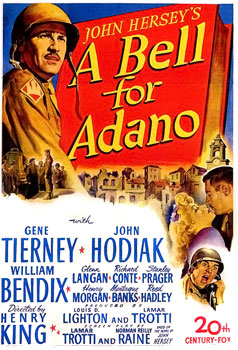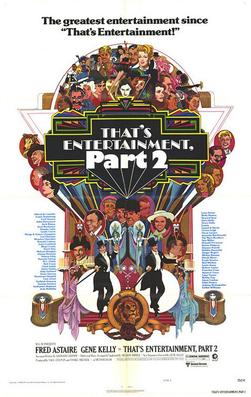
Going My Way is a 1944 American musical comedy drama film directed by Leo McCarey and starring Bing Crosby and Barry Fitzgerald. Written by Frank Butler and Frank Cavett based on a story by McCarey, the film is about a new young priest taking over a parish from an established old veteran. Crosby sings five songs with other songs performed onscreen by Metropolitan Opera's star mezzo-soprano Risë Stevens and the Robert Mitchell Boys Choir. Going My Way was followed the next year by a sequel, The Bells of St. Mary's.

This is a list of notable events in music that took place in the year 1942.

This is a list of notable events in music that took place in the year 1944.
The year of 1942 in film involved some significant events, in particular the release of a film consistently rated as one of the greatest of all time, Casablanca.

Samuel Cohen, known professionally as Sammy Cahn, was an American lyricist, songwriter, and musician. He is best known for his romantic lyrics to films and Broadway songs, as well as stand-alone songs premiered by recording companies in the Greater Los Angeles Area. He and his collaborators had a series of hit recordings with Frank Sinatra during the singer's tenure at Capitol Records, but also enjoyed hits with Dean Martin, Doris Day and many others. He played the piano and violin, and won an Oscar four times for his songs, including the popular hit "Three Coins in the Fountain".

The Brill Building is an office building at 1619 Broadway on 49th Street in the New York City borough of Manhattan, just north of Times Square and further uptown from the historic musical Tin Pan Alley neighborhood. It was built in 1931 as the Alan E. Lefcourt Building, after the son of its builder Abraham E. Lefcourt, and designed by Victor Bark Jr. The building is 11 stories high and has approximately 175,000 square feet (16,300 m2) of rentable area.

Fortunio Bonanova, pseudonym of Josep Lluís Moll, was a Spanish baritone singer and a film, theater, and television actor. He occasionally worked as a producer and director.

A Bell for Adano is a 1945 American war film directed by Henry King and starring John Hodiak and Gene Tierney. It was adapted from the 1944 novel of the same title by John Hersey, which won the Pulitzer Prize for fiction in 1945. In his review of the film for The New York Times, Bosley Crowther wrote, "... this easily vulnerable picture, which came to the Music Hall yesterday, is almost a perfect picturization of Mr. Hersey's book."
Roger Edens was a Hollywood composer, arranger and associate producer, and is considered one of the major creative figures in Arthur Freed's musical film production unit at Metro-Goldwyn-Mayer during the "golden era of Hollywood".

That's Entertainment, Part II is a 1976 American compilation film released by Metro-Goldwyn-Mayer and a sequel to That's Entertainment! (1974). Like the previous film, That's Entertainment, Part II was a retrospective of famous films released by MGM from the 1930s to the 1950s. Some posters for the film use Part 2 rather than Part II in the title.

John Francis Regis Toomey was an American film and television actor.

Thomas Edward Brown was an American actor and model.

For Me and My Gal is a 1942 American musical film directed by Busby Berkeley and starring Judy Garland, Gene Kelly – in his film debut – and George Murphy, and featuring Martha Eggerth and Ben Blue. The film was written by Richard Sherman, Fred F. Finklehoffe and Sid Silvers, based on a story by Howard Emmett Rogers inspired by a true story about vaudeville actors Harry Palmer and Jo Hayden, when Palmer was drafted into World War I. The film was a production of the Arthur Freed unit at MGM.

The National Midget Auto Racing Hall of Fame is an American Hall of Fame and museum for midget cars. The Hall of Fame is located at Angell Park Speedway in Sun Prairie, Wisconsin, and can be accessed during weekly Sunday races during the summer. Inductees are often honored with their award in January at the Chili Bowl at Tulsa.
Ernest Andrew Royal was a jazz trumpeter. His older brother was clarinetist and alto saxophonist Marshal Royal, with whom he appears on the classic Ray Charles big band recording The Genius of Ray Charles (1959).

Crazy House is a 1943 comedy film starring Ole Olsen and Chic Johnson.

James Joseph Lydon was an American actor and television producer whose career in the entertainment industry began as a teenager during the 1930s.
Daniel Bernard Bank was an American jazz saxophonist, clarinetist, and flautist. He is credited on some releases as Danny Banks.
"Guess I'll Hang My Tears Out to Dry" is a 1944 torch song and jazz standard, with music by Jule Styne and lyrics by Sammy Cahn. It was introduced on stage by film star Jane Withers in the show Glad To See You, which closed in Boston and never opened on Broadway. The duo Styne and Cahn had previously written songs for several of Withers' films.

Two Girls and a Sailor is a 1944 American musical film directed by Richard Thorpe and starring Van Johnson, June Allyson and Gloria DeHaven. Set on the American homefront during World War II, it's about two singing sisters who create a lavish canteen to entertain members of the military, thanks to financial contributions from a mysterious donor. The picture features a host of celebrity performances, including Jimmy Durante doing his hallmark "Inka Dinka Doo", Gracie Allen, and Lena Horne. Richard Connell and Gladys Lehman were nominated for the Academy Award for Best Original Screenplay.














